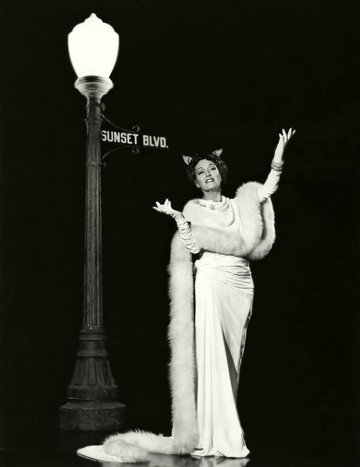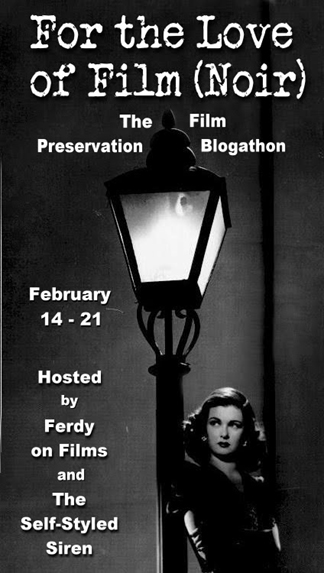
This post is my contribution to an internet event hosted by two wonderful blogs, Ferdy on Films and the Self-Styled Siren. Last year the two collaborated on their first film-preservation blogathon, For the Love of Film. This year, they are focusing in on Film Noir. This dark (in more ways than one) film genre features paranoid heroes, shady ladies, and fateful drama.
Funds donated by clicking on this link (you KNOW you need to do it!) will go to the Film Noir Foundation. Donors are eligible for prizes, but the real prize is getting to help restore the 1950 film The Sound of Fury—and to read all the great posts the blogathon is attracting.
When Ferdy and the Siren announced that they were devoting this year’s blogathon to Film Noir, I wasn’t sure whether I’d be able to come up with a film to write about. To be frank, I’m not a noir girl. As a sometime intellectual I appreciate films noirs aesthetically, but as an eternal movie fan I like to identify with characters in films, particularly female characters.
Most noir female protagonists, while interesting, are hard to identify with. They’re too busy being femmes fatales, often literally.
And then I remembered Norma Desmond, who taught me a lot about the way we relate to films—and about the aging process.
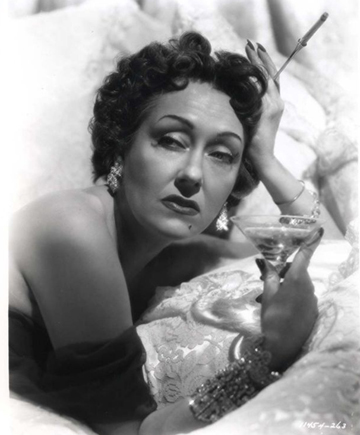
Norma Desmond is the iconic heroine (I see her as a heroine, anyway) of Billy Wilder’s 1950 film Sunset Boulevard. Played with studied camp and seemingly effortless glamour by Gloria Swanson, Norma is a relic of a recent (in 1950) but almost forgotten (also in 1950) facet of Hollywood’s history, the silent-film industry.
When sound film came along, many performers’ careers were finished. And so it was that the premise of the film–that a woman of 50 who had been an enormous star 20 years earlier was now almost forgotten–could be believable.
Wilder took advantage of that believability by casting several silent-film greats as Norma Desmond’s bridge-playing cohorts; the film’s younger, irreverent narrator, Joe Gillis (William Holden), refers to them as her “Wax Works.” Swanson herself hadn’t been in a successful film in many years, although she had kept busy on the stage.
Norma Desmond deals with her exile from stardom by denying it, by trying to live as much as possible in the past. She fastens on to Joe, an out-of-work screenwriter, as a possible vehicle for her comeback (she actually prefers the word “return”).
She hires Joe to revamp the script she hopes will re-launch her career and soon turns him into a kept man ensconced in her fading old mansion.
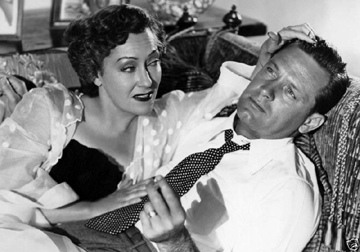
Joe grows more and more resentful, and Norma grows more and more delusional. Norma’s final murder of Joe is no surprise since it is previewed in the film’s opening shots. Nevertheless, Wilder managed to make the film’s ending sad, haunting, and more than a little scary.
When I first saw Sunset Boulevard I was about 20. I already had a major crush on William Holden and tended to see the film through his character’s eyes. To the young me Norma Desmond was a frightening old witch, and I rooted for Joe Gillis to end up with the more age-appropriate Betty Schaefer (Nancy Olson).
A reader at a studio, Betty criticizes Joe’s newest screenplay early in the film. Viewers later learn that she is harsh because she believes he has potential. The two end up collaborating on a screenplay late at night when Norma is asleep. Betty says she wants to work on the screenplay because she is ambitious, but she doesn’t want to work on it without Joe, with whom she is obviously smitten.
She is presented as the anti-Norma, young and interested in promoting Joe (a traditional feminine attitude) rather than herself. She allows herself to be kissed by Joe rather than reaching out to grab him as Norma does.
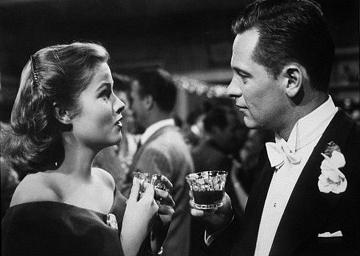
Norma says she is in love with Joe, but she wants him to bolster her ego and her career; his career is of secondary interest to her (if it is of interest at all).
When the young me watched Sunset Boulevard, she asked all the “what if” questions about Joe that the film encourages: what if Joe had gotten away from Norma; what if he had become a good, honest screenwriter; and so forth.
I saw Sunset Boulevard again in a film class when I was in my early 30s, as part of a discussion of classical Hollywood narrative. I found myself crying at the picture’s end.
I wasn’t crying for poor dead Joe, however. I was crying for poor live Norma. And I cry for her now each time I see the film.
I admit that the character has major flaws. She is vain, selfish, prone to emotional blackmail, and ultimately insane. Nevertheless, as another memorable Billy Wilder character later said, “Nobody’s perfect.”
Betty’s major appeal is that she is 22 years old. Anybody can be 22—or at least, just about everybody is 22 at some time or other.
Norma is hardworking, talented (she is luminescent in the scenes from her silent-film work projected in her living room, real footage of Swanson in the unfinished film Queen Kelly), and barely middle aged.
The scene in which she sails in to the Paramount Pictures lot to confer with her former director, Cecil B. DeMille, is touching. She meets several of the “little people” with whom she used to work—a security guard, an electrician, a hairdresser—and one gets a sense of what the young Norma Desmond might have been like.
DeMille’s character describes her as “a plucky little girl of seventeen, with more courage and wit and heart than ever came together in one youngster.”
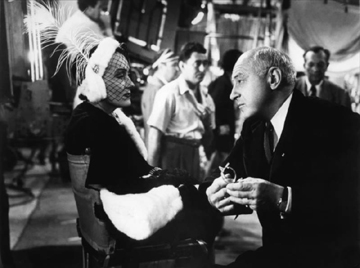
The older Norma may have lost some of her wit(s). She still has a lot of courage, if not quite enough to face what has become of her stardom and her audience. And she exhibits all too much heart.
It’s a tribute to the power of film—to the power of a good film, anyway—that I can relate to different characters and different storylines at different ages.
Perhaps when I’m 65 or so I’ll identify with Max von Mayerling, Norma’s butler, who is also her ex-husband and former film impresario. In a sense Max is the most selfless person in the film, since he lives only to give Norma Desmond what she wants.
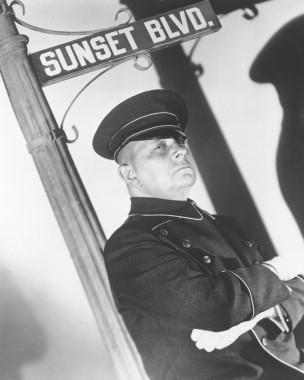
Or maybe I won’t identify with him. I’ve never been completely selfless.
Moreover, it’s hard not to remember that Max is played by Eric von Stroheim, whose reputation went a little overboard in the NON-selfless direction.
According to Billy Wilder, this egotistical, autocratic former film director threatened to sue the Academy of Motion Picture Arts and Sciences for nominating him as best supporting actor in Sunset Boulevard because he COULD NEVER BE a supporting player. (Wilder may have made the story up, but it’s plausible.)
We’ll see how the film strikes me when I hit 65.
In any case, I urge readers to watch the film again (or for the first time) and tell me whom they identify with.
On to a recipe……
I thought long and hard about recipe choice for this post. I might have selected something organic and vegetarian; Gloria Swanson was a noted health-food enthusiast and an early proponent of local, organic foods.
I almost made the biscuits in this 1933 recipe (if you can call it that;it’s just cheese added to biscuits), which a Bisquick recipe booklet claimed was a Swanson favorite.
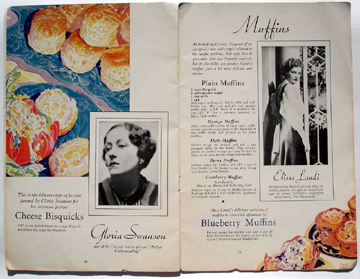
In the end I decided to honor Film Noir as a whole with a Valentine’s Day adaptation of the classic Icebox Cake. One if the visual signatures of many films noirs is a series of bars across the screen (often across actors’ faces) that symbolize the shadows that hover over the doomed characters, and the prisons that many film-noir protagonists create for themselves.
Adapted from Nabisco
Ingredients:
2 cups heavy cream
1 teaspoon vanilla
several tablespoons framboise or Chambord (raspberry liqueur)
1/2 pint raspberries (more if you like and can afford them!)
1 package (9 ounces) Nabisco Famous Chocolate Wafers (these flat, round chocolate cookies are difficult but not impossible to find; just ask around at area grocery stores)
Instructions:
Whip the cream until stiff peaks form. Fold in the vanilla and liqueur.
Gently crush 2/3 of the raspberries and fold them carefully into 1/2 of the flavored whipped cream. Reserve the remaining whipped cream.
Spread about 1-1/2 tablespoons of the raspberry/cream mixture onto a wafer. Top it with another wafer. Stack them standing up until you have 9 or 10 wafers; then gently lay the stack on its side on a serving plate. Repeat, adding to the horizontal stack, until you have used up the remaining wafers.
Cover the log of stacks with the remaining whipped cream.
Refrigerate, gently covered, for at least 4 hours.
Remove from the fridge just before serving and garnish the torte with the remaining raspberries. Slice diagonally so that black-and-white bars appear.
Nabisco’s original recipe says its cake serves 14; in my family, it served 8 to 10.
